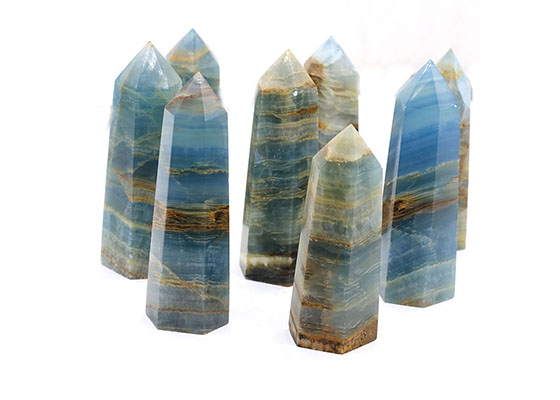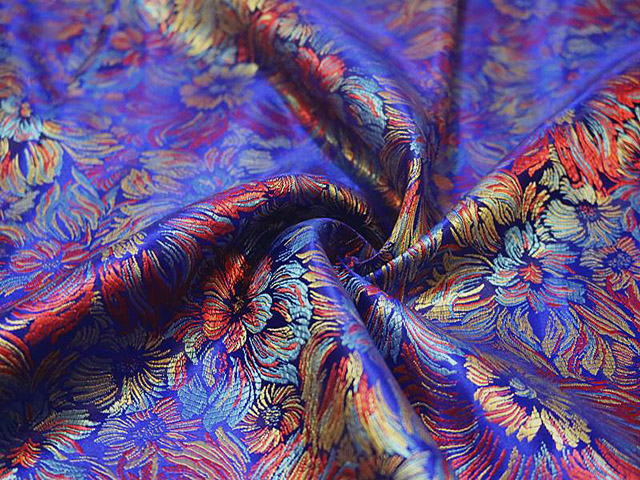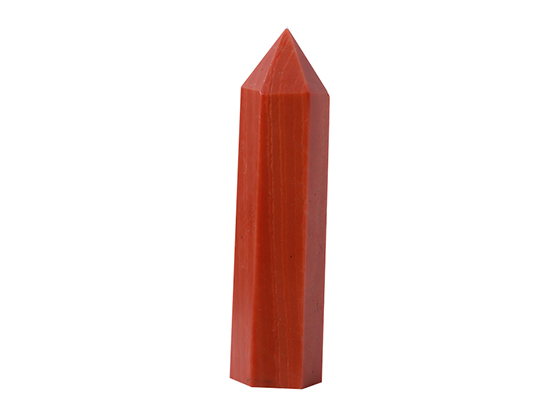Jasper is a popular and versatile gemstone that has been used in jewelry and decorative items for centuries. It is a type of quartz that is often found in a range of colors and patterns, making it a highly sought-after material for artists, designers, and collectors.
Two of the most popular varieties of jasper are orbicular jasper and ocean jasper. While these two types of jasper share some similarities, they also have distinct differences that set them apart. In this blog post, we’ll explore the characteristics, formation processes, and uses of orbicular jasper and ocean jasper, and examine the key differences between the two.
Orbicular Jasper
Description and Characteristics
Orbicular jasper, also known as ocean jasper, is a type of jasper that features spherical or orb-like patterns. These patterns can be found in a range of colors, including green, red, yellow, and white. The patterns are caused by the presence of minerals such as quartz, feldspar, and amphibole, which combine to create unique and intricate designs.
Formation Process and Geographical Locations
Orbicular jasper is formed through a combination of volcanic activity and sedimentary processes. The magma that erupts from volcanoes contains a range of minerals, including silica, which is the primary component of jasper. Over time, these minerals are deposited in layers on the ocean floor, where they undergo a process of consolidation and compression to form jasper.
Orbicular jasper is found in a range of locations around the world, including Madagascar, Russia, Australia, and the United States. The quality and color of the jasper can vary depending on the location, with some of the most prized specimens coming from Madagascar.
Types of Orbicular Jasper
There are several types of orbicular jasper, each with their own unique patterns and characteristics. Some of the most popular types include:
- Ocean Jasper: This type of orbicular jasper features vibrant colors and intricate patterns that resemble ocean waves and coral reefs.
- Morgan Hill Jasper: This type of orbicular jasper is named after the location in California where it is found. It features a range of colors, including red, green, and yellow, and often has a banded appearance.
- Kabamba Jasper: This type of orbicular jasper is found in Africa and features green and black orbs on a white or gray background.
Ocean Jasper
Description and Characteristics
Ocean jasper is a type of orbicular jasper that is known for its vibrant colors and unique patterns. It features spherical or orb-like patterns in shades of green, blue, yellow, and white, and is often found in a range of other colors as well. The patterns are caused by the presence of minerals such as quartz, feldspar, and iron oxide, which combine to create unique and intricate designs.
Formation Process and Geographical Locations
Ocean jasper is formed in a similar way to orbicular jasper, through a combination of volcanic activity and sedimentary processes. The magma that erupts from volcanoes contains a range of minerals, including silica, which is the primary component of jasper. Over time, these minerals are deposited in layers on the ocean floor, where they undergo a process of consolidation and compression to form jasper.
Ocean jasper is found primarily in Madagascar, where it is highly prized for its unique patterns and vibrant colors. It is also found in a few other locations around the world, including Indonesia and Russia.
Types of Ocean Jasper
There are several types of ocean jasper, each with their own unique patterns and characteristics. Some of the most popular types include:
- Atlantis Stone: This type of ocean jasper features intricate patterns in shades of blue, green, and white, resembling the lost city of Atlantis.
- Flower Ocean Jasper: This type of ocean jasper features patterns that resemble flowers, with vibrant colors and intricate designs.
- Dragon Blood Ocean Jasper: This type of ocean jasper features green and red patterns that resemble dragon scales.
Comparison
While orbicular jasper and ocean jasper share some similarities, there are several key differences between the two. These include:
- Appearance and color: While both types of jasper feature orb-like patterns, the colors and designs can vary significantly. Orbicular jasper tends to have a more muted color palette, with shades of green, red, yellow, and white. Ocean jasper, on the other hand, is known for its vibrant colors, with shades of blue, green, and yellow, as well as a range of other colors.
- Patterns and markings: The patterns and markings on orbicular jasper tend to be more circular and uniform, while those on ocean jasper can be more irregular and varied. Ocean jasper often features more intricate and detailed patterns, with swirls, dots, and other shapes.
- Mineral composition and texture: Orbicular jasper tends to be denser and harder than ocean jasper, with a more uniform texture. Ocean jasper, on the other hand, can be more porous and have a softer texture, making it more susceptible to scratches and other damage.
- Rarity and value: Ocean jasper is generally considered to be rarer and more valuable than orbicular jasper, due to its unique patterns and vibrant colors.
Uses
Both orbicular jasper and ocean jasper are highly sought-after materials for jewelry and decorative items. Some of the most popular uses of these stones include:
- Jewelry: Both types of jasper are used to create a range of jewelry items, including necklaces, bracelets, and earrings. They are often cut into cabochons or beads to showcase their unique patterns and colors.
- Decorative items: Orbicular jasper and ocean jasper are also used to create a range of decorative items, including vases, bookends, and paperweights. Their unique patterns and colors make them highly prized by collectors and designers.
- Healing and spiritual uses: Some people believe that jasper has healing properties and can be used to promote physical and emotional wellbeing. It is often used in meditation and spiritual practices.
Conclusion
Orbicular jasper and ocean jasper are two unique and beautiful types of jasper that are highly prized by collectors, artists, and designers. While they share some similarities, such as their formation processes and mineral composition, they also have distinct differences in their appearance, patterns, and value. Understanding these differences can help you choose the right type of jasper for your needs, whether you’re creating jewelry, decorative items, or using it for healing or spiritual purposes.




